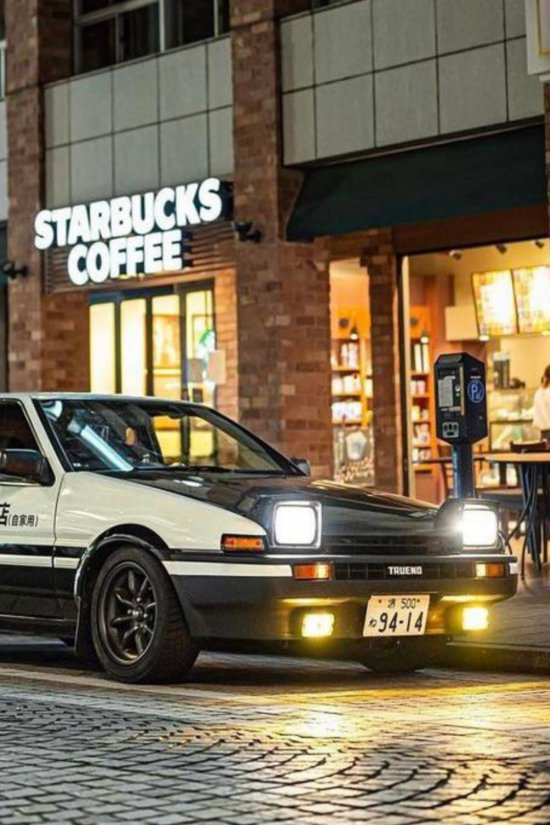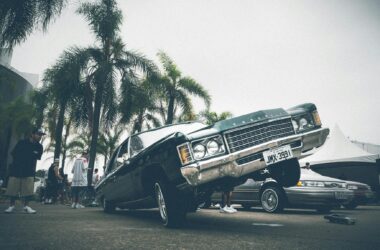Initial D, the iconic Japanese manga and anime series, has left an indelible mark on car culture, inspiring generations of car enthusiasts, street racers, and tuners around the world. Created by Shuichi Shigeno in 1995, the series follows Takumi Fujiwara, a young tofu delivery driver, who unexpectedly becomes a street racing legend in the mountains of Japan. Beyond its gripping storyline, Initial D is celebrated for its portrayal of drifting, JDM (Japanese Domestic Market) cars, and mountain racing, shaping the global perception of car culture and the Japanese tuning scene.
One of the most profound influences of Initial D is its role in popularizing drifting. The series’ depiction of mountain pass (or “touge”) racing, where drivers expertly drift around sharp corners on narrow roads, introduced this thrilling driving technique to a global audience. Before Initial D, drifting was a relatively niche aspect of motorsport, largely confined to the streets and tracks of Japan. However, the anime’s dynamic racing scenes showcased drifting as an art form, sparking interest among car enthusiasts worldwide. As a result, drifting became mainstream, leading to the rise of professional drift competitions like D1 Grand Prix and Formula Drift.
The cars featured in Initial D also played a significant role in shaping car culture. The protagonist’s humble Toyota AE86 Sprinter Trueno became an international icon, symbolizing the idea that skill and technique could outmatch raw power and expensive cars. The AE86, a lightweight, rear-wheel-drive car known for its agility, became a cult favorite, with enthusiasts around the world flocking to modify and tune their own versions. Beyond the AE86, Initial D introduced viewers to an array of JDM legends, including the Nissan Skyline GT-R, Mazda RX-7, and Mitsubishi Lancer Evo. These cars, previously popular in Japan, gained new recognition and desirability in the West, solidifying their place in the global car culture.
Initial D also influenced the broader car modification and tuning community. The series highlighted the importance of fine-tuning cars for performance on mountain roads and racetracks, focusing on modifications like suspension tuning, weight reduction, and aerodynamics. This attention to detail resonated with car enthusiasts, encouraging them to look beyond superficial modifications and focus on performance-oriented upgrades. The “sleeper car” philosophy, where an unassuming car is heavily modified under the hood to outperform flashier vehicles, was also popularized by the series, aligning with Takumi’s modest yet incredibly fast AE86.
The influence of Initial D extends beyond just the cars and driving techniques—it also captured the camaraderie, rivalry, and deep passion that underpin car culture. The anime portrayed racing as not just a test of speed but also a way of life, where friendships are forged, and respect is earned through skill and sportsmanship. The characters in Initial D were relatable to many young car enthusiasts, showcasing the joy of learning, improving, and competing. This spirit of community and shared passion for cars continues to define car culture today.
The cultural impact of Initial D can be seen in the rise of mountain racing in real life. The touge racing scene in Japan grew in popularity during the late ’90s and early 2000s, with enthusiasts seeking to replicate the thrill of Initial D races. Internationally, fans of the series brought the touge racing mentality to their local car scenes, often organizing informal races in hilly or mountainous regions, much like the ones seen in the anime.
Initial D’s lasting legacy is seen in the widespread appreciation for Japanese car culture across the globe. It helped to elevate JDM cars into global symbols of performance and style, inspiring a new generation of drivers to embrace not just the aesthetics but also the driving techniques and community that Initial D so vividly portrayed. Even today, the series remains a touchstone in car culture, with fans continuing to celebrate its influence on car meets, drift events, and online forums dedicated to street racing.









